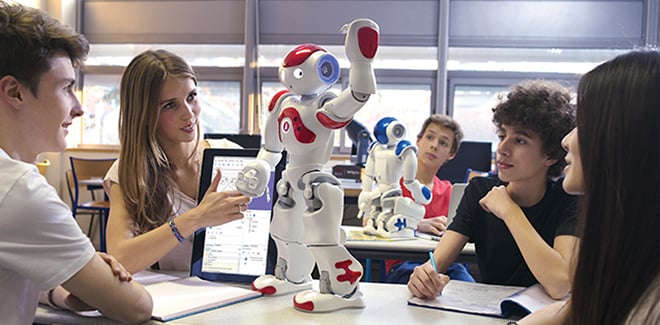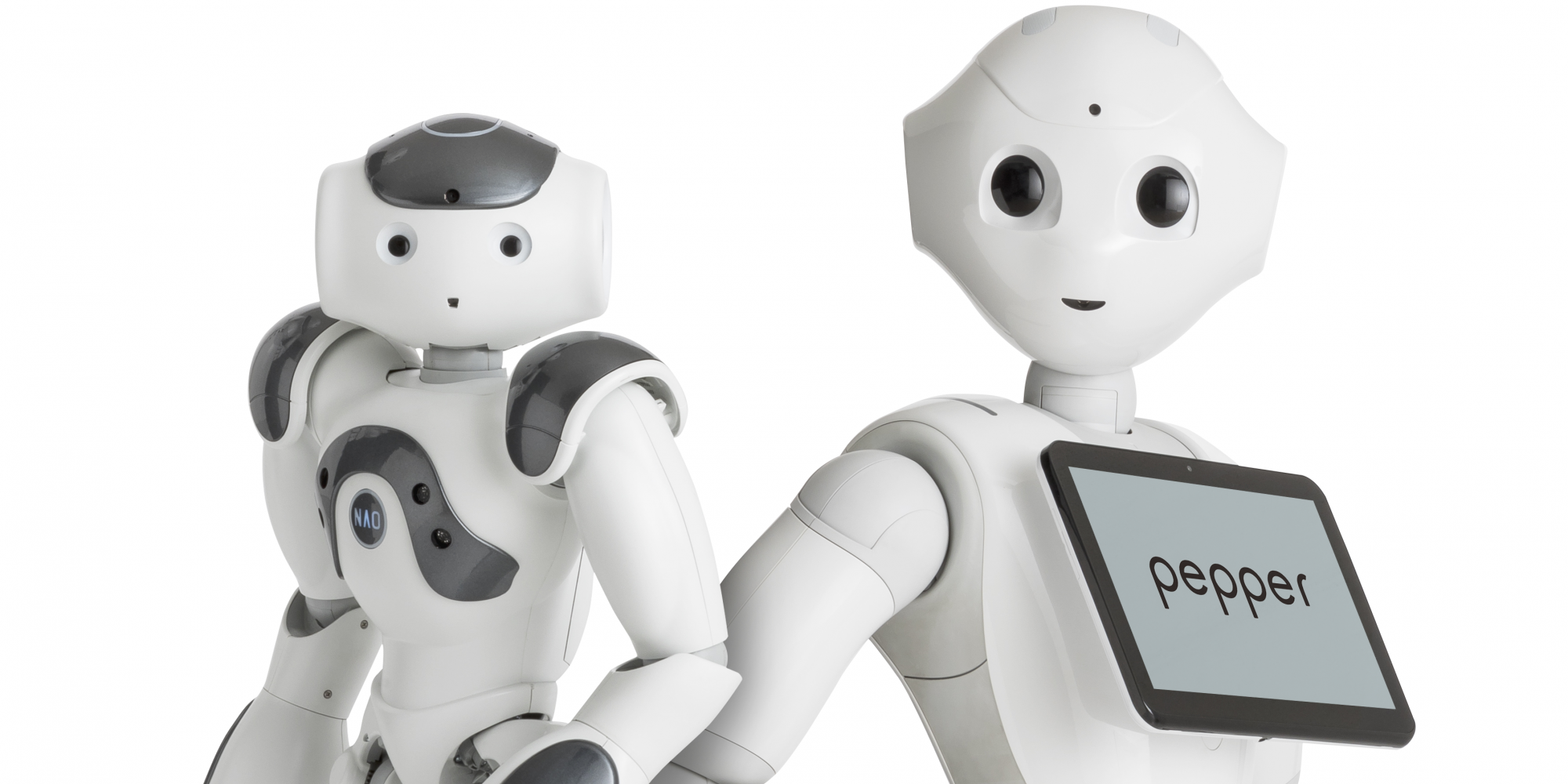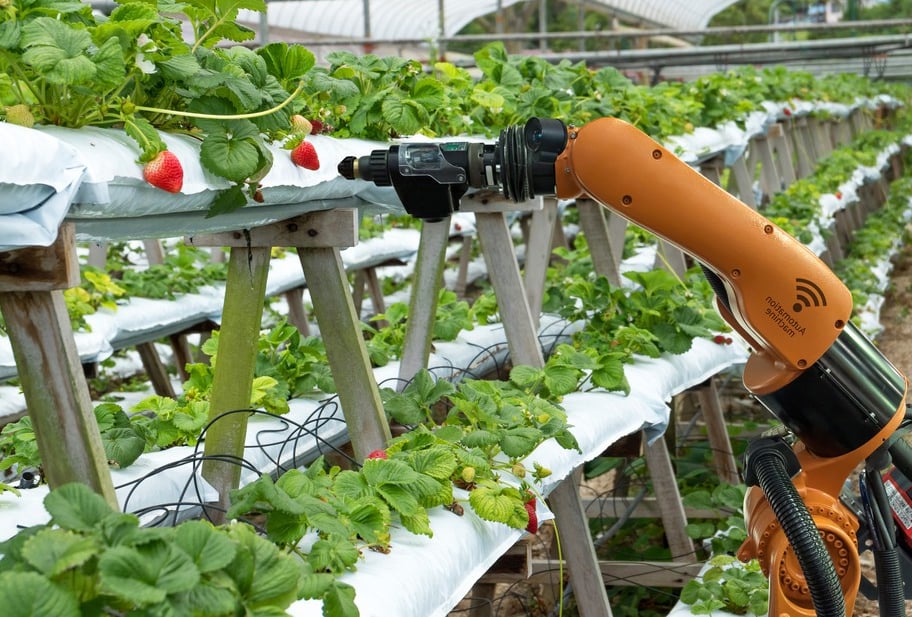RobotLAB Blog
Everything You Need To Know About Robotics in Businesses
How to Get your Educators Excited About Using EdTech
 Photo by Avel Chuklanov on Unsplash
Photo by Avel Chuklanov on Unsplash
The pandemic has taken a toll on all our institutions, and schools aren’t exempt. School leaders know that schools are closed, but teaching must go on, and; learning must go on.
Schools have moved to online learning. Educators are working from home, delivering classes to learners over the video, preparing lesson plans, collaborating with other educators, amongst many other tasks. Educators are working harder and longer, and many are exploring the edtech at their disposal. It is a big change that requires school leaders to manage their educators’ motivation to prevent loss in productivity and burn-out.
Here are a few strategies to make sure your educators remain motivated and online schooling continues smoothly.
- 0 Comments
- Jul 13, 2021 10:45:29 AM
- Posted by Natalia Galvis
- Topics: EdTech, STEM, Education, teachers, students, Technology, Innovation, Edchat, Digital Technology, Educators, online, distance learning, lessons, Online Learning
How Hidden Classroom Dynamics Can Stymie Girls in STEM
By Youki Terada
If we want to close the gender gap in science, we need to look at the invisible forces that shape classroom culture.
- 0 Comments
- Jun 29, 2021 10:00:00 AM
- Posted by Natalia Galvis
- Topics: Robotics, EdTech, STEM, Computer Science, Problem Based Learning (PBL), teachers, Coding, Robots,, students, STEMchat, Edchat, Digital Technology, teaching, online
4 Steps to Maximize Summer Learning
 Photo by Start Digital on Unsplash
Photo by Start Digital on Unsplash
Summer learning will play a critical role in students' return to full-time in-person learning this fall.
- 0 Comments
- Jun 25, 2021 10:00:00 AM
- Posted by Natalia Galvis
- Topics: Robotics, EdTech, STEM, Computer Science, Problem Based Learning (PBL), teachers, Coding, Robots,, students, STEMchat, Edchat, Digital Technology, teaching, online
Turn To Coding And Robotics If You Want Your Students To Posses a Growth Mindset

Diligence, a curious spirit, and perseverance are qualities we desire to see in our students. These traits are elements of the “growth mindset.” Teaching students coding presents one of the best opportunities to develop and nurture kids’ growth mindset in the school setting. This article shows five scenarios to support this position.
- 0 Comments
- Jun 24, 2021 10:00:00 AM
- Posted by Natalia Galvis
- Topics: Robotics, EdTech, STEM, Computer Science, Problem Based Learning (PBL), teachers, Coding, Robots,, students, STEMchat, Edchat, Digital Technology, teaching, online
Setting Students Up for Careers in Computer Science
By Dan Matthews
 Image Source: Pexels
Image Source: Pexels
Discussing careers with students can be challenging. After all, a lot of weight is often placed upon the subject. As a teacher, you're expected to provide insights into potential careers that empower students to thrive beyond school.
In this regard, computer science can be a great area of discussion and exploration. It has increasing relevance in the current digital landscape. There is also a growing number of professions it can be applied to. These factors, among others, can make it an important consideration. Indeed, it is part of the reason that it is imperative to teach computer science in schools. Yet, it has something of a dry reputation. Students who may not be inclined toward the science, technology, engineering, and math (STEM) subjects run the risk of missing out on careers that enrich their adult lives.
So, how can you best go about setting students up for careers in computer science? Let’s take a closer look at some areas of consideration.
- 0 Comments
- Jun 23, 2021 10:00:00 AM
- Posted by Natalia Galvis
- Topics: Robotics, EdTech, STEM, Computer Science, Problem Based Learning (PBL), teachers, Coding, Robots,, students, STEMchat, Edchat, Digital Technology, teaching, online
3 reasons virtual STEM is here to stay
By Alan Downward, Ph.D., Science Team, Flinn Scientific

Virtual STEM offers engaging learning opportunities for students—opportunities that have proved essential during COVID.
- 0 Comments
- Jun 22, 2021 10:00:00 AM
- Posted by Natalia Galvis
- Topics: Robotics, EdTech, STEM, Problem Based Learning (PBL), teachers, Robots,, students, STEMchat, Edchat, Digital Technology, teaching, online
Student Robotics and the K-12 Curriculum
By Mark Gura
Having been involved with student robotics programs for many years, I feel that robotics just may be the most perfect instructional approach currently available. It offers classroom activities that teach high-value STEM content as well as opportunities to powerfully address ELA Common Core Standards. In fact, there are connections to robotics across the full spectrum of the curriculum. Robotics is also a highly effective way to foster essential work skills like collaboration, problem-solving, and project management. It does all this while keeping kids so motivated and engaged than getting them to stop working and move on to the rest of the school day can be a challenge -- a good problem to have!
- 0 Comments
- Jun 21, 2021 10:00:00 AM
- Posted by Natalia Galvis
- Topics: Robotics, Problem Based Learning (PBL), teachers, Robots,, students, Edchat, Digital Technology, teaching, online
SoftBank Robotics America and RobotLAB Announce Exclusive Channel Partnership to Offer Pepper and NAO in North America
RobotLAB will also distribute Whiz in select markets as part of the Whiz Partnership Program.

SAN FRANCISCO -- June 17, 2021-- RobotLAB Inc., (RobotLAB) the leading robotics integrator, and SoftBank Robotics America (SBRA) announced today that the humanoid robots Pepper and NAO are now exclusively available through RobotLAB in North America. The partnership also expands Pepper’s previous industry and STREAM education focus areas to a broader range of applications, and marks RobotLAB’s debut as one of SBRA’s Whiz Partners.
- 0 Comments
- Jun 17, 2021 6:05:51 PM
- Posted by Natalia Galvis
- Topics: Problem Based Learning (PBL), teachers, students, Edchat, Digital Technology, teaching, online, PR, Press Release
The 5 Best STEM Careers in Renewable Energy
By Devin Partida

The world may move to only using renewable energy in the coming years. To make this transition, we must have a generation of problem solvers to help us reach a greener future.
Science, technology, engineering, and mathematics (STEM) education has been growing in popularity in recent years. Some see this as a trending academic discipline that may pass, while others emphasize the role it will play in renewable energy. Educators and teachers can encourage students to pursue degrees in STEM and enter the renewables market.
In the first five months of 2020, over 25% of electricity in the country was powered by renewable sources. Students will significantly benefit from an early introduction to STEM, and the hope is that they will be able to land a job in their respective fields.
One common goal between many countries is to reach net-zero emissions before the next decade. Replacing traditional energy sources with new technologies will aid in achieving that goal as well as create well-paying jobs for individuals. We need individuals with a STEM background to help us reach this critical goal.
Let’s explore some possible careers that students with STEM backgrounds could potentially enter.
- 0 Comments
- Jun 16, 2021 10:00:00 AM
- Posted by Natalia Galvis
- Topics: EdTech, STEM, Grants, Curriculum, Problem Based Learning (PBL), teachers, students, Edchat, Digital Technology, teaching, online, funding, funds
Unlocking the Code for Robotics in the Classroom
Teaching robotics to elementary students can enhance sensory learning, improve socialization, provide opportunities for hands-on innovation, and raise the level of rigor.
- 0 Comments
- Jun 14, 2021 11:00:00 AM
- Posted by Natalia Galvis
- Topics: EdTech, STEM, Grants, Curriculum, Problem Based Learning (PBL), teachers, students, Edchat, Digital Technology, teaching, online, funding, funds
Relevant Posts
- Augmented Reality: A Tool for Teaching Students Robot Programming
- Fostering Innovation Through Youth Education in STEM and EdTech
- How Parents Can Foster STEM Learning Beyond the Classroom
- How Robotics Cultivates a Deep Understanding of Mathematics in Students
- RobotLAB Receives EDTech Chronicle 2023 ‘BESTIE’ Award for Landmark Partnership with American Samoa Dept. of Education.
Subscribe to Email Updates
-
I Want To Learn MoreADDITIONAL INFORMATION
